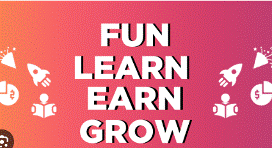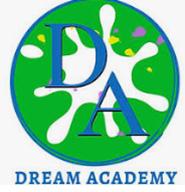





|
|
|
|
|
CONTACT 7322817122 7324238052 |
|
Culinary art |
|
Thinking of a career in the food service industry or looking to develop your culinary skills? This introductory course will provide you with basic cooking and knife skills while preparing you for entry into the culinary world. Discover the history of food culture, food service, and global cuisines while learning about food science principles and preservation. Finally, prepare for your future by building the professional, communication, leadership, and teamwork skills that are critical to a career in the culinary arts.
Did you know that baking is considered a science? Discover how to elevate your culinary skills through the creation of stocks, soups, sauces, and learn baking techniques. Examine sustainable food practices and the benefits of nutrition while maintaining taste, plating, and presentation to truly wow your guests. The last unit in this course explores careers in the culinary arts for ways to channel your newfound passion!
When enrolling in the full year option of this course it will be delivered in two semesters. Transcripts will reflect each semester separatel
Unit 1: The Safe Kitchen
Discuss the dos and doníts of basic cooking
Describe standard procedures for chemical hazard control
Explain the importance of safety procedures in the workplace
Identify and use proper first aid procedures for kitchen-related accidents and injuries
Unit 2: Knife Skills
Discuss the importance of proper knife safety
Explain and demonstrate basic knife techniques
Identify and explain the four key knives in a professional kitchen
Describe various cutting methods and the role they play in food preparation
Unit 3: Food Safety
Apply sanitation standards to the kitchen environment
Identify the key elements of foodborne illnesses and how to prevent them
Explain the process and importance of waste management in the food industry
Describe the inventory process and how it affects food preparation and safety
Unit 4: Cuisine and Culture
Explain food science and how it affects the culinary world
Identify various cooking methods and how they affect food
Describe different cuisines and their relationship to culture and history
Differentiate between proteins and other food groups
Unit 5: Garde Manger: The Cold Kitchen
Explain the history and significance of the garde manger
Describe the types of dishes prepared in the cold kitchen
Identify proper preservation methods, both new and old
Detail the basic equipment in the garde manger
Unit 6: The Principles of Food
Describe a standardized recipe and its significance to the food industry Perform cost analysis on an original recipe Explain the application of weights and measures in a food service setting Discuss the principles of food preparation
Unit 7: Professionalism
Discuss the history of food service and some of its contributing figures Describe the various roles of the kitchen hierarchy Define professionalism and its key tenets Explain the importance of oral and written communication in the workplace
Unit 8: Leadership, Teamwork, and Ethics
Describe effective leadership in the workplace Explain the role of teamwork in the kitchen Discuss the importance of team diversity Identify and exhibit professional work ethics
†
Unit 9: The Healthy, Sustainable Kitchen
Describe the six major food groups and how they affect dietary health Apply nutritional principles during food preparation and planning Discuss the strengths and weaknesses of nutritional guidelines Demonstrate healthy cooking techniques Explain the importance of sustainability in the kitchen and how it can be achieved
Unit 10: Tools of the Trade
Describe the tools and equipment found in a commercial kitchen Explain how to best select, use, and maintain kitchen equipment Develop and use an equipment checklist in the kitchen Discuss proper mise en place in a kitchen workstation
Unit 11: Stocks, Sauces, and Soups
Define the four essential components of cooking stock Identify and describe the two classifications of soup Discuss the principles of thickening agents Explain the characteristics and derivatives of the five mother sauces
Unit 12: Baking: Breads, Cakes, & Cookies
Describe various baking methods Identify the basic ingredients involved in baking Explain the principles of food science in baking techniques Discuss the ways baking is considered both a science and an art
Unit 13: Culinary Business and Entrepreneurship
Discuss the history and trends of the food service industry Explain the procedures of purchasing, receiving, and issuing Identify how entrepreneurs maximize opportunity Describe various marketing strategies in food service
Unit 14: Service, Style, and Satisfaction
Differentiate between different types and styles of food service Identify proper techniques for handling customer relations Describe some methods of effective food presentation Explain formal dining etiquette from the perspective of both a server and a customer
Unit 15: Choosing Your Culinary Career
Identify career and employment opportunities Explain various steps in the career decision-making process Discuss different levels of education and training required for food service Describe ways to manage multiple roles and responsibilities
Unit 16: Networking for Success
Explain the significance of professional organizations in hospitality and food service Create a personal leadership plan Identify leadership and teamwork opportunities to enhance your professional skills Name and define several prominent culinary associations
† |
